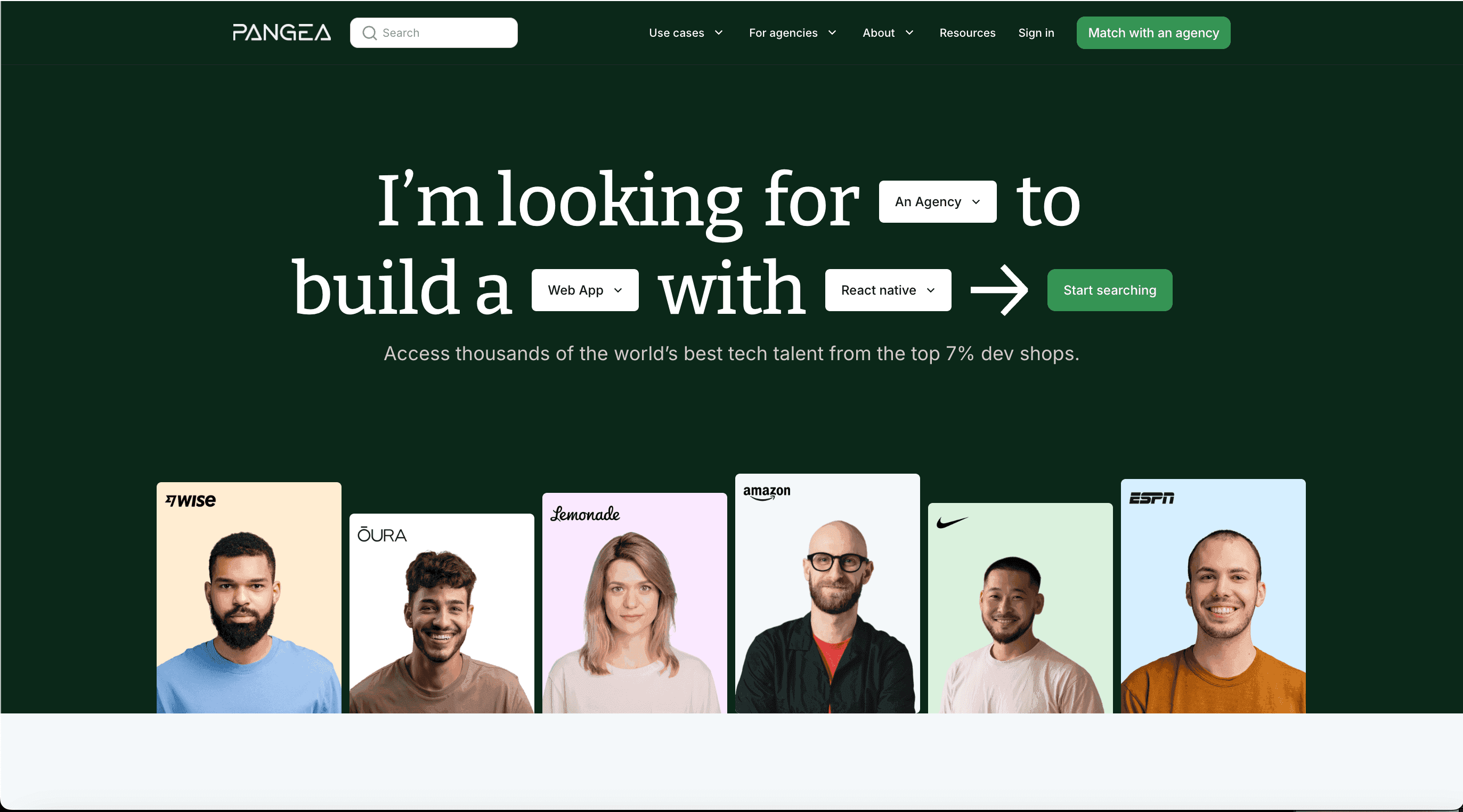Info
Pangea.ai
Product Lead
2024
AI-Powered Hiring Platform Transformation
Pangea.ai needed to transform from a service marketplace running on Airtable into a scalable product platform—but with extremely limited development capacity. Instead of accepting these constraints as limitations, I redesigned how we work: using AI tools like Claude and v0 to create working prototypes, leveraging external teams for specific deliverables, and building lean processes that forced better communication. The constraint actually made us more efficient than most larger teams. We transformed the platform and achieved 60% efficiency gains with a fraction of typical development costs.
What You'll Learn About My Approach
- Strategic product thinking in action
- How I navigate ambiguity and drive outcomes
- My approach to cross-functional leadership

Key Results
Operational efficiency: 40% → 100% (60% improvement)
Development costs: Industry standard → 60% lower with 1 developer
Specification time: 4 weeks → 1 week (75% reduction via AI prototyping)
Agency matching accuracy: 70% → 95% match rate improvement
The Challenge
Understanding the problem and stakeholder needs
Pangea.ai was running on Airtable—great for getting started, but creating serious bottlenecks for scalability. Client and agency workflows were fragmented, processes were slow, and we couldn't build the seamless digital platform we needed to compete. The bigger challenge? We had extremely limited development capacity. In most companies, this would be seen as impossible—you can't transform a platform with those constraints. But I saw it as an opportunity to rethink how product teams should work.

My Approach
How I led the team through discovery to execution
I redesigned how we work to make constraints into advantages:
Started using AI tools like Claude and v0 to create working prototypes instead of long specification documents. This helped our developer understand requirements immediately and gave external designers a clear starting point when we needed high-fidelity work.
Migrated from Airtable to a proper scalable database, architecting for long-term growth. Leveraged AI to streamline the most complex pain points while preserving the human touch that made Pangea special.
Shifted to a hybrid model with external teams for specific projects rather than trying to hire full-time specialists we couldn't afford. The key was being very clear about scope and deliverables upfront—no room for confusion when you can't afford to redo work.
Discovered that constraints force better communication and clearer thinking. Our single developer became more productive than many larger teams I've worked with because there was zero confusion about priorities or requirements.
What We Built
Cross-functional delivery and team coordination
We transformed the platform from service marketplace to scalable SaaS, and honestly, I think we moved faster than we would have with a traditional larger team. The AI-powered prototyping approach meant everyone understood exactly what we were building before writing code. The hybrid external team model gave us specialized expertise exactly when we needed it. The constraint forced us to be more efficient and strategic about every decision—and that discipline became our advantage.
Results & Team Impact
Measurable outcomes and what the team learned
We achieved 60% reduction in operational inefficiencies, dramatically improved agency matching speed and accuracy, and increased client satisfaction—all with development costs 60% lower than industry standard. The platform now has a scalable foundation for growth. But the bigger lesson was proving that constraints can force better processes. When you can't throw resources at problems, you get very good at clarity, prioritization, and execution. That's actually how lean, efficient companies should work.
Like what you see?
I'm open to product leadership roles in AI, robotics, and emerging tech. Let's discuss how I can help scale your product.